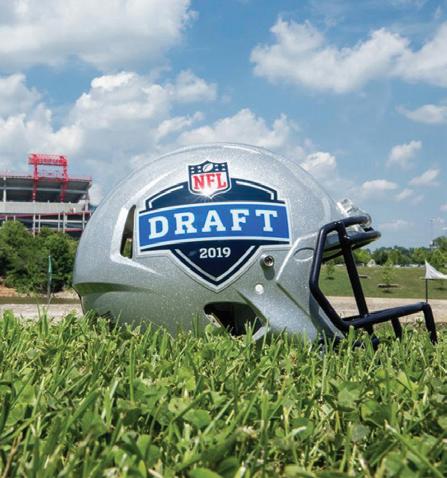FAREWELL, FRIEND:
PLUS, WHY DO HERBICIDES SOMETIMES FAIL?



























PLUS, WHY DO HERBICIDES SOMETIMES FAIL?



























Toro’s full line of all-electric and hybrid mowers and vehicles were engineered to help reduce engine exhaust emissions, noise pollution and be more efficient, easy to use and easy to maintain. All without compromising power, precision, comfort or reliability. And with fuel prices soaring, Toro will continue to invest in golf’s future in a sustainable way.

@smithturf
#Reelmaster #Greensmaster #Workman #ToroLynx #ToroInfinity

Christopher C. Sykes

ot to be confused with the Australian 80’s rock band with hits like “Down Under” and “Who Can it Be Now,” but your board and associated committees are hard at work shaping the future of the Tennessee Turfgrass Association. I know I am dating myself and for any younger folks in the audience, just ask your parents.
The last article entitled ‘From the Board Room’ focused on recent events of your Board, which laid out how your association is committee driven. The committees all meet separately on behalf of the association and report back to the Board of Directors (BOD) when we have our regularly scheduled meetings.
The Finance Committee recently worked with the Tennessee Golf Course Association (TGCSA) to reward our Executive Director, Ms. Melissa Martin, for all her efforts. She has served as the Executive Director for both the TTA and TGCSA since 2017 and an adjustment was long overdue. All parties agreed unanimously that Melissa has done a phenomenal job and would be very difficult to replace. Thank you, Melissa, from all of us, for all that you do for the TTA and TGCSA.
One huge area of success I want to highlight is with your Education Committee who have most of the program built for the 2023 TTA Annual Conference and Trade Show. Dr. Jim Brosnan chairs this committee, and the success with our educational program never ceases to amaze me. Continuing Education is a passion of mine and I have been on this committee for over seven years now. We work hard every year to build the best program possible and the content only continues to improve. Each year, I wonder if we can do as well as the past year, only to be amazed with the World Class Educational Value we are able to provide to our membership. I’ll try not to drop any spoilers, but just trust me as the 2023 Tennessee Turfgrass Conference and Trade Show will be the best yet! We are all very excited about the program that has a little something for everyone.
Our schedules are all filling up as we enter another growing season and best to luck to everyone on a great summer in 2022.
Sincerely,
Christopher C. Sykes
TTA President
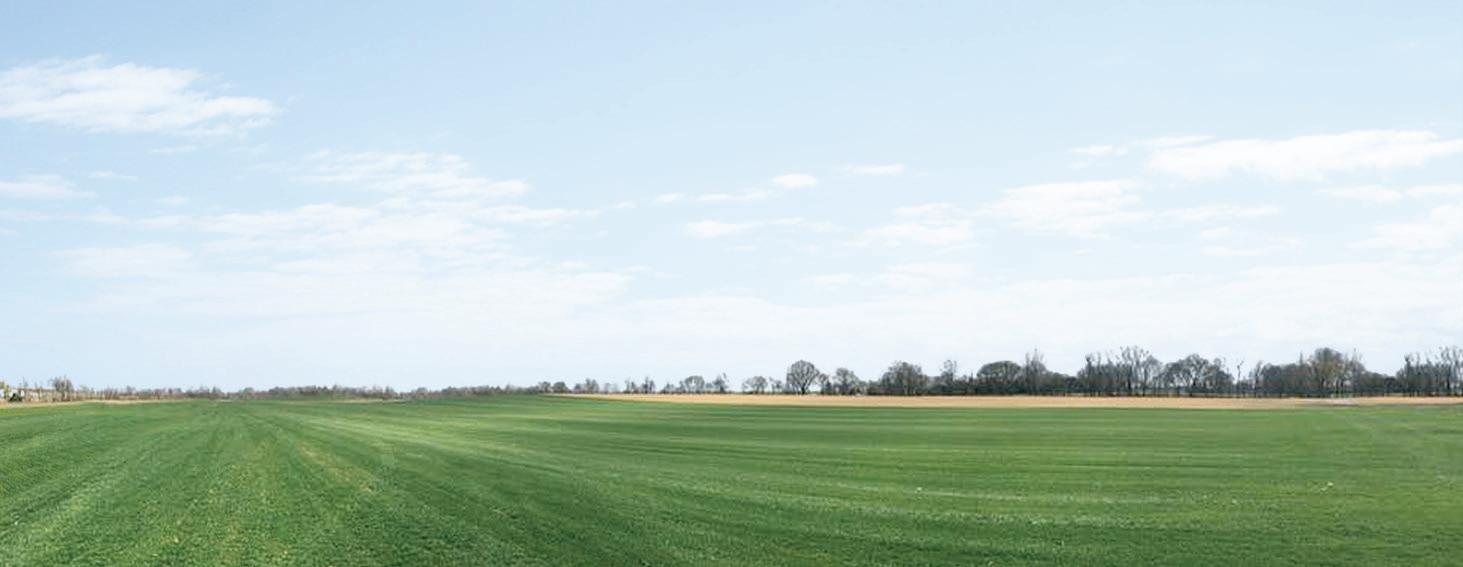
400 Franklin Road Franklin,
37069 (615) 928-7001 info@ttaonline.org www.ttaonline.org
PUBLISHED BY
Leading Edge Communications, LLC 206 Bridge Street Franklin, Tennessee 37064 (615) 790-3718
EDITOR
TifTuf® uses 38% less water than Tifway and will pay for itself in lower water bills. Maintains acceptable turf quality and aesthetics under drought stress. Available in 2022


• Mid Tenn Turf is now a part of Super-Sod
• Pick up sod from more locations than anyone
• Full truck loads and small quantities delivered
• Call us today for quotes and sod availability

the time this commentary is posted, we will be well into the summer months. Some of you have completed your warm season grass green-up, while others are transitioning from cool season to warm season grass. Spring sports and practices are now complete and outside activities at your facility are in full recreational mode and hosting weekend tournaments. Fiscal budget planning has been submitted and approved. It is my hope you were able to plan and meet some of your needs regarding products, equipment, and of course additional staff. Our resources for material, staff, and equipment vary across this great region. It is worth mentioning that we all as turfgrass and facility managers continue to do our best with what we have and always strive for excellence within our industry.
The last TTA magazine highlighted our “Excellence in Sports Turf Award. Mr. Dustin Wilson, football coach and athletic director at Springfield High School, has a compelling story. I personally want to thank Dustin for his excellence in sports field maintenance and for being a leader within his community. Please look forward to our next recipient announcement in the next TTA magazine publication.
The February/March TTA magazine commentary introduced the idea of being a leader within your workplace. I would like to take this time to continue with another characteristic of leadership, perhaps the most valuable. It is a skill that is simple and easy to do, and often overlooked by no fault of our own. We as leaders MUST practice empathy. Empathy is understanding the plight and feelings of others. This goes on to understanding the emotions, thoughts, and realities of team members in the workplace. A decline in mental health, the increase in stress and anxiety, loss of sleep, being sad and irritable within the workplace affect job performance significantly. We’ve all been there in some shape or form. The source of these challenges may tie back to things within the workplace, or from the home. It is our job as leaders to be empathetic and recognize this context within our team. Are we so totally focused on our job and routines that we truly do not notice these challenges? Or far worse, do we know as leaders and not intervene?
As I delve now into empathy, how does this look within the workplace? This can be as simple as visiting your team members and asking them “how are you doing, feeling, or what are you experiencing?” It could be the simple question of how is work going? Responses such as “Hey I’m sorry,” or “I understand,” “I’ve been in that situation,” and “Hey, I’m working on it, and this is what we are going to do.” Empathy must be truly genuine and applied on a regular basis to show healing. This healing can result in team members being more engaged in their work, being able to navigate the high demands in workload, and finally, team member retention. Those members who experience empathy from their leaders are more likely to stay in their current role and overall be more productive at work. What about problems occurring from home? It is understood as a leader you may have no control of those situations. You CAN walk it with them emotionally and give encouragement. This can provide the necessary hope that your team members need to overcome their difficulty.
As I close, I do want to say it is easier said than done. I do believe if we engage and show empathy on a regular basis, your team will RISE and overcome those challenges. Let us all begin by being those leaders that define a healthy workplace.
Stay up to date on the latest information on meetings by visiting our website, www.tvstma.org.
Stephen Callis TVSTMA President



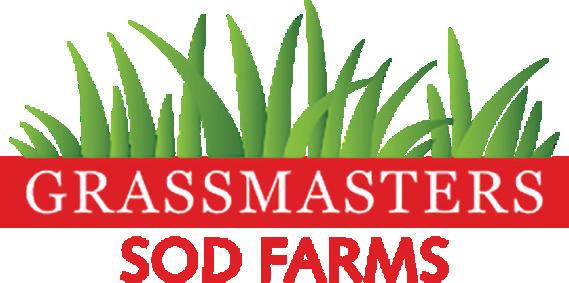
August
August






JANUARY 9 – 11, 2023 •
(FOR BIO, SEE PAGE 14)
Tennessee Turfgrass Association’s annual Conference and Trade Show has historically been a favorite event for members. A world-class education lineup, along with certifications, networking, and award recognition rounds out full lineup of events and workshops that are essential for turfgrass professionals.
We were proud to return to an in-person event in January 2022, and we anticipate a great turnout once again for our 2023 gathering. Be sure to register early and make plans to join us!


Danny Bader is a best-selling author and sought-after speaker whose life was transformed by a near death experience. Danny speaks to audiences nationwide teaching people to invest in themselves, develop vision, and leverage useful thoughts to build momentum in the midst of monotony, burnout and despair. His message is simple; “ALWAYS COMMIT TO BETTER DAYS AHEAD.”
His unique perspective and trusted voice have taken him into many Fortune 500 organizations—like Marriott, Lincoln Financial, Astellas, Comcast, Merck, Eisai, and others—infusing their people with the vital need for vision and inspiring them to live their best lives. Danny’s reputation as an influencer in this arena continues to grow among some of the most well-respected brands and organizations nationwide.
Danny’s best-selling book, Back to Life; The Path of Resilience, has received rave reviews, reaching a #1 ranking on Amazon. He also pioneered the jckrbbt® principles and energizes audiences worldwide through his Back to Life podcast. Danny is also the author of 3 other books, I Met Jesus for a Miller Lite; Abraham’s Diner, Simple Wisdom for Moving from Stress to Relaxed Focus & Inspiration; and Taking The Sh*t Out of the Show.
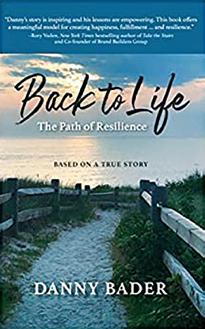



AVAILABILITY: Nationwide by arrangement and via telephone; available as a last-minute guest CONTACT: Danny Bader 610-888-8611, danny@dannybader.com, website: www.dannybader.com

“Danny was terrific… more than worth the investment. Forget work; he covers the personal side, and perhaps even more so. I think that’s why people will get much more out of someone like him versus your typical motivational speaker. Thanks for the referral.”
“You are a massive force for good making an impact in this world and many of us are grateful for the work you’re putting out there!”
“I want to thank you for doing more than just teaching & leading a seminar. Thank you for blessing us with your passion and energy. You are an inspiration, and you have renewed my desire to ‘get my butt off the couch!’”
“During my career I have seen many deliver motivational messages, and I will tell you, Danny Bader is above the rest. His approach was refreshing and on point. I loved it!”


Andy Milligan West Tennessee andymilligan@bwicompanies.com 901-428-7004 Jeff Gordon West Tennessee jeffgordon@bwicompanies.com 901-937-9230 Jeff Easley Middle Tennessee jeffeasley@bwicompanies.com 615-585-1522
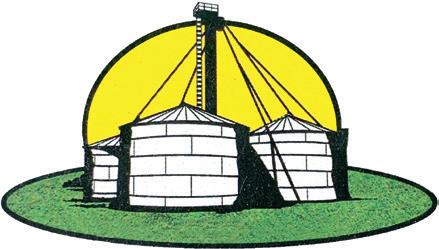

An exciting part of our Annual Conference program is the presentation of awards and scholarships honoring those members who work hard to demonstrate a commitment to excellence, best practices, innovation, collaboration and dedication.
As an association, we are proud to honor and highlight those turfgrass managers who go the extra mile, as recognition by our peers imparts extra significance to these awards.
The TTA Board hopes to see many businesses and individuals across the state represented in applications this year. Please nominate a deserving professional – it’s quick and easy to complete the nomination form!
TOM SAMPLES PROFESSIONAL of the
One of the most prestigious and highest recognitions bestowed on a Tennessee turfgrass professional by the Tennessee Turfgrass Association is the Tom Samples Professional of the Year Award. Each year TTA members are given the opportunity to nominate those who they feel have made contributions to the turfgrass industry.
TO NOMINATE:
https://ttaonline.org/page-1822617
RECENT RECIPIENTS INCLUDE:
2021 Bob McCurdy
2019 Brandon Horvath
2020 Frank Turner
2018 Bill Blackburn
The Tennessee Turfgrass Association (TTA) would like to recognize outstanding contributions by individuals, organizations, businesses, educational institutions, and agencies for successful projects or activities designed to improve the environment through wildlife habitat preservation, water and resource conservation and reduction, and educational outreach. Through our Environmental Stewardship Award, we can create greater knowledge and awareness of environmental and conservation practices and projects by members of TTA which have demonstrated outstanding contributions to environmental protection and improvement.
The following criteria must be met to submit for the Tennessee Turfgrass Association Environmental Stewardship Award:
• Property must be fully managed by an active and in good standing member of the Tennessee Turfgrass Association.
• Property must be in use for at least two years.
TO NOMINATE: https://ttaonline.org/EnvironmentalStewardship-Nomination-Form
2018 Jordan Clark, The Links at Kahite
2019 Chris Lloyd, The Country Club, Morristown 2020 Three Ridges Golf Course 2021 Curtis Pique, Univertisy of Tennessee
The Tennessee Turfgrass Association (TTA) recognizes that you make personal and professional contributions to our industry and to the organization you serve. Therefore, the TTA would like to distinguish golf courses across the state with the Golf Course of the Year Award. Through these awards we are able to further one main element of our mission which is to gain acknowledgement for the professionalism of our members.
The following criteria must be met to submit for the Tennessee Turfgrass Association Golf Course of the Year Award:
• To be considered a golf course must have had two full seasons of play.
• All materials must be submitted in one application packet to be considered.
TO NOMINATE: https://ttaonline.org/Golf-Course-of-the-YearNomination-Form
RECENT RECIPIENTS INCLUDE:
2018: Public Course of the Year, Tim Parsons, The Course at Sewanee Private Course of the Year, Guy Hudson, Oak Ridge Country Club
2019: Public Course of the Year, Bobby Schultz, Presidents Reserve Course Private Course of the Year, Ryan Blair, Holston Hills Country Club
2020: Public Course of the Year, WillowBrook Golf Club Private Course of the Year, Belle Meade Country Club
2021: Public Course of the Year, Gary Southerland, Egwani Farms Private Course of the Year, Jason Sanderson, Troubadour Golf and Field Club





The Tennessee Turfgrass Association (TTA) recognizes that you make personal and professional contributions to our industry and to the organization you serve. Therefore, the TTA would like to distinguish fields across the state with the Sports Fields of the Year Award. Through these awards we are able to further one main element of our mission which is to gain acknowledgement for the professionalism of our members.
The following criteria must be met to submit for the Tennessee Turfgrass Association Sports Field of the Year Award
• For the purposes of this award, a “field” constitutes ONE natural grass playing surface
• To be considered a field must have had two full seasons of play (may be concurrent, i.e., football and soccer on the same field in the fall, etc.)
• All materials must be submitted in one application packet to be considered.
2018: High School Field of the Year, Kris Drake, Webb School of Knoxville Municipal Field of the Year, Joe Rodocker, RichEllen Sports Complex Collegiate Field of the Year, Mike Policastro, Cleveland State Baseball Professional Field of the Year, Eric Taylor, the Ballpark at Jackson
2019: High School Field of the Year, Mike McLaury, Independence High School Collegiate Field of the Year, Neyland Stadium, Darren Saybold Municipal Field of the Year, Billy Grisard, Drakes Creek Park Professional Field of the Year, Eric Taylor, Smokies Stadium
2020: High School Field of the Year, Ensworth Football Collegiate Field of the Year, Haslam Field Municipal Field of the Year, West Tennessee Healthcare Sportsplex Professional Field of the Year, Nissan Stadium
2021: High School Field of the Year, John Clintsman, Ensworth Baseball Collegiate Field of the Year, Mark Brew, Olympic Field at Lee University Municipal Field of the Year, Andrew Jacks, Camp Jordan Professional Field of the Year, Duncan Long, Smokies Stadium
Supporting the next generation through college scholarships is an honor – TTA is proud to support students in their pursuit of higher education! If you know a high school senior who meets the criteria for these scholarships, please encourage them to apply!
The Tennessee Turfgrass Association Legacy Scholarship offers financial aid to children or grandchildren of active TTA members in good standing. Scholarship applicants are not required to be pursuing education in a turfgrass related field to be eligible for the TTA Legacy Scholarship. The scholarship is funded and administered by the TTA. The scholarship is $2000.
1. Applicant must be enrolled at a Tennessee accredited institution of higher learning in Tennessee.
2. Applicant must be the child or grandchild of a current, in good standing member of the Tennessee Turfgrass Association.
The Ernest Hardison Memorial Scholarship offers financial aid to students interested in pursuing a career in turf management. The scholarship is funded and administered by the TTA. The Scholarship and Awards Committee will review all applications and select the scholarship recipient. All decisions of the committee will be final. This scholarship will be awarded at the TTA annual conference and a check will be made payable to the recipient in the amount of $2000.
1. Applicants must be enrolled at a Tennessee accredited institution of higher learning in Tennessee in a turf management related field of study. Applicants who are enrolled in online and/or correspondence courses must be currently employed in a turf management related field in Tennessee.
Visit https://ttaonline.org/page-1583684 for applications.


By Julie Holt
Tom Samples, UT Turfgrass Extension Specialist, greets everyone as a friend – even if he hasn’t met them yet. For this reason and many others, he has earned quite a reputation in Tennessee and beyond as a titan in the turf industry. It won’t take you long to find a turfgrass manager in Tennessee who says Dr. Samples’ knowledge and commitment has saved their hide or their grass a time or two.
In his position as Extension Specialist, Dr. Samples has the unique task of understanding the challenges of turf professionals across the state, and that is no small feat. From the flat river bottoms of West Tennessee to the rolling hills of Middle Tennessee and the rocky soil of the East Tennessee transition zone, there’s a problem for every solution in Tennessee turf.
The very art of understanding this variance in conditions is a chapter on it’s own, but what Dr. Samples has brought to the game is an open mind and a joy for learning from and helping individuals and companies who face the many hurdles to growing and managing turfgrass.
Dr. Samples began his work at UT in November of 1985. He shared his education journey with us in a recent interview. “I majored in agronomy crops at Ohio State. My dad was a farm

manager in Ohio, and late in my high school career, I decided I really liked the farm thing, and I really would enjoy farming, but we didn’t own any land. So maybe rather than farm, I just need to find a job or vocation where I could help farmers. I majored in Agronomy Crops at Ohio State. My first job after graduating was for a farm cooperative in middle Ohio, in the Columbus area. To be brutally honest, I was not a great manager. But while I was there, I got very interested in lawn care products. I got to befriend a lot of those folks that were out there making lawn applications, so I gained their confidence, for some strange reason, and I got really interested in the products and the product lines.”
A move to Oklahoma to be closer to family was where he pursued his Master’s Degree, and also where his wife Wanda got her Master’s in Library Science. “I had no earthly idea that I would ever have a Ph.D.,” he shared, “but I just fell in love with the research and the people of Oklahoma. They’re so social and they kind of take care of their own. Once I started to work on my Ph.D., I thought, I’m not sure I want to do this grant writing and research thing as much as I want to do outreach. I asked my major advisor, Dr. Doug Brede, ‘Do you think I could survive as an extension person?’ He kind of embraced that, so he made sure I talked a lot at meetings.”
After graduating from Oklahoma State, Dr. Samples had two opportunities (Tennessee and Oklahoma), and having visited his grandparents many summers near Morristown, returning to Tennessee felt like a natural choice.





In the 37 years since Dr. Samples accepted the position at UT, a lot has changed – not just the plants, products and equipment used, but also the growth of the turfgrass science staff within the university.
“When I first got here, Dr. Lloyd Callahan was doing it all. He taught, he was doing fungicide trials, he had research greens that, before I got here in 1985, he’d lost those greens because UT decided to build a vet med school. Then my position was created not by University of Tennessee actions, but by the actions of the turfgrass industry, specifically Mr. Buck Allison. He was the former commissioner of the highway department, I believe. Mike Allison, his son, was in the sod business in Nashville.
“I got here in 1985, and then UT made one of the finest hires they’ve ever made in John Sorochan. One thing we loved about John is what you see is what you get, and one thing I particularly liked was sometimes when someone comes into a teaching and research position like he did, the focus is initially on what I’m going to do in the research arena. What John did, he recognized the value of our geographic location here in Tennessee, we’re in the northern transition zone. His goal was to expand the turfgrass curriculum, attract students, and then while he was doing that,
to also decide what research really needed to be done. I’ll never forget, we have a lunch place called Mabel’s on campus, and John and I were at Mabel’s one day. John looked at me and said, ‘It’s going to be fun to see how far we can take this program.’
“I was the outreach guy. I really wanted to take the research to the industry, and I wanted to take what I saw and learned from the industry professionals, what needs to be studied, back to John. It was a nice arrangement, and then John thinks big picture. I think within the boundaries of Tennessee. John thinks globally, so I think our personalities complement one another. He and I hammered every time we saw a dean, we’d explain, ‘Hey, the turfgrass program at Tennessee could be this and one reason is, geographic location – transition zone, transition zone, transition zone.’ And finally, there was a great leader on the ag campus, his name was Dr. Joe DiPietro, and Joe listened to us. He made sure that Brandon Horvath was hired to do the teaching, but in between that time, Jim Brosnan came on board. I consider Dr. Sorochan, Dr. Horvath and Dr. Brosnan, in addition to being premiere researchers and instructors and extension people and communicators, they are like brothers to me. So that’s how this thing evolved. In their own ways, they’ve all gained national and international recognition. And then I just kind of kept plowing along, but it’s been a heck of a good ride!”

Dr. Samples is the first and loudest voice in appreciating the contributions of professionals in the field – the ones who are up with the sun mowing, seeding, spraying and maintaining the plants he’s dedicated a career to studying. A major part of his success has been in the relationships he’s built in his decades of service to the industry. He’s well known for showing up and really hearing the day-to-day challenges of turfgrass managers in the field. Bridging the gap between the hands-on work and the research and trials conducted by the University, Extension is essential to the continued growth and innovation that sustains the turf industry.
“One thing I owe the industry so much is they were willing to share with me. Here I’m from ‘THE University’,




I would tell them, ‘Tell me how this works. Why do you do it this way?’ Because I had not been out on the golf courses and dealt with traffic. We work with plots, but when you have 50,000 rounds of golf a year on a golf green that’s 5,500 square feet, there are issues that are going to come up. So it’s just such a challenge. Same with the sports turfs. I’ve worked some with bermudagrass, not much at all with overseeding. We go out to the football coaches and you’ve got a high school that’s got a very limited budget that the soccer coach wants to play on the field in the spring and the football coach wants to protect the field so that he’s got a safe field in the fall. It’s basically learning, and a lot of it was not just learning the ins and outs of the industry, but learning how to listen. I think that’s really helped me over my career. The thing that I always keep in mind—what that individual does on a daily basis dictates whether he or she is employed.”
While he admits prophecy might not be his gift, Dr. Samples will pontificate on what he hopes the future holds for his position on the turf team and his friends in the industry.
“With the economics as they are right now, we feel very fortunate in the Plant Sciences Department to be able to fill a position such as mine. Whenever anyone leaves, that’s an opportunity for the University to make a change in terms of what direction that may need to take. So sometimes a position that is closed as a result of retirement, there’s no guarantee that it will be filled. I’m so happy that’s not going to happen in the case of the Turf
Extension position. I can almost guarantee you that it’s going to change. This is what’s interesting, at a university, we think in terms of research, extension and teaching. But the turf team, we all share in that.
“I love the diversity, I’ve met people here at UT from Iraq, India, the Philippines, from all over the world and that’s a lot of fun just to get to know those cultures and be introduced to some of the cultural differences. I think that’s what will continue to make us stronger is to identify people that we want to work with that have a skillset that will let us advance a new technology. Discovery – when you think of a university, I think of discovery, that’s the fun part. Something that’s brand new. Conceptually, if we know this is working on a small scale, how do we get it to a golf course with 160 acres? Who would have thought that – like the drone, this unmanned, aerial vehicle—that we could use that to identify areas on the golf course that we have an irrigation leak? Or even satellite-aided fertilization. Think about these things that have occurred. I would have never thought that I’m going to be able, in the year 2022, to go online and get a virtual tour of a golf course, by hole, and never have played it. I don’t know where the next major advancement’s going to be, but hopefully it’s going to be as a result of communications from the industry professionals in terms of what we need or somebody saying, ‘You know what, if we could adapt…’ Sometimes the nice thing is, we have the opportunity to interact with engineers,

medical professionals. Dr. Sorochan’s work with the Center for Athletic Field Safety and Dr. Dickson’s work – they’re working with physicists, with people that know bones and structure and skeletons and forces. That’s where I think we have an advantage as a university is to reach across out of the office, maybe even across campuses or across states to identify people that have a common interest and can help advance some level of technology or some aspect of safety or something that’s of value to the population across the US.
“What I really hope is the university will continue to be in a position to be responsive to the industry. I’m prejudicial, but I work with what I consider to be the best industry in Tennessee, but the reality is I think it’s all about communication, but then also it’s about funding. In order to make something happen, you have to be able to promote it.









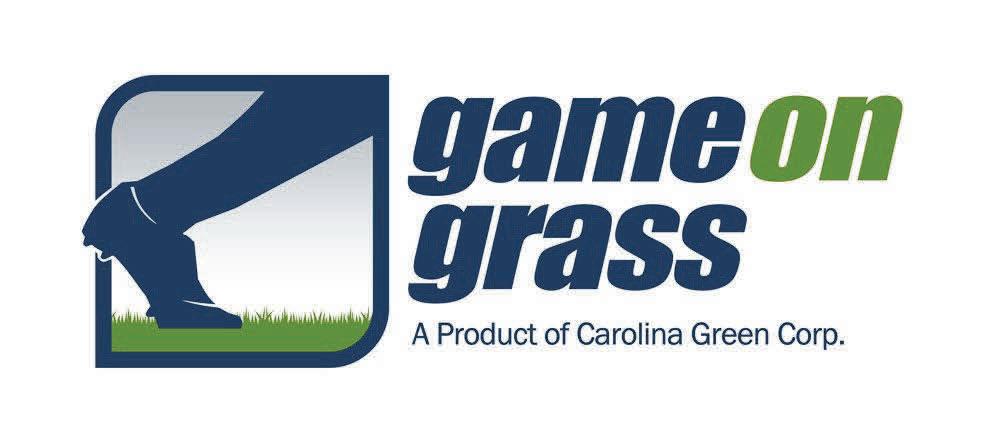
Dr. Samples is much too humble to reflect too much on the influence he’s had on so many individuals over a long career, but you don’t have to look too far to see the ripples his work has created near and far. TTA’s highest honor each year, The Tom Samples Professional of the Year Award, is bestowed at the annual conference each year, honoring an individual who has exemplified the spirit of service and diligence its namesake has embodied.
True to his selfless nature, Dr. Samples shares his proudest accomplishement. “The reality is the best thing that ever happened to me was my wife and my kids. I rarely speak about my family, but that’s really what I’m proudest of. There were times when –and I’m not sad about it because it was part of the job -- but I was writing publications at three in the morning on a Saturday morning. Because I wanted to spend quality time with the kids, but I had to produce to be able to stay employed. It’s just this thing called tenure and tenure track and advancing and representing the university. So it sounds corny, but they’re what I’m most proud of, my family.”
When the topic turned to retirement plans, he seemed more uncertain of the exact plan, but it won’t surprise his friends to hear that he has some rather thrilling items on his list.
“I’ve got so many things I have to do in terms of – people say it’s the ‘honey-do’ list – no, it’s my list as well! There’s so many –paint some rooms, enclose a garage – so many things I want to do, but I have to learn.
My first week I’m going to do some serious fishing, probably from the bank. I want to go to Huntsville and do some strange things—I remember taking the kids to the Aerospace museum in Huntsville – don’t they still have a weightless room? I want to be weightless. And believe it or not, I want to jump out of a plane with a parachute buddy.
Then I’ve got a great friend who flies air balloons, so I’m going up with him. I’m going to do some crazy stuff. I’ve had a great life, if I have an accident, so be it. I don’t recover as well as I used to, but I want to do the crazy stuff. I want to do some things that my Dean might not appreciate me doing. ‘Tom, you’re not representing the University of Tennessee.’ No, Dean, I’m not! I’m jumping out of this perfectly good airplane. I want to fly in a glider. I’m free!”
“One of the weirdest things starting your career – you’ve been a lowly graduate student, you’ve been writing on a dissertation, they’ve been editing, they say you can’t write, they go through a thesis defense or a dissertation defense and they make you feel like you don’t know anything. Because it’s part of the process. So day one, I’m at the University of Tennessee. I don’t have an assigned office yet, so I’m in behind a common area where I have a phone and I’ve got one of these old Radio Shack SR80 printers, and every time it starts to print, it sounds like a jet warming up. It was huge. I get my first call – ‘Doctor Samples you have a call.’ The first time I was called Dr. Samples, it’s like, ‘wait a minute, I think they mean ME.’ That’s now naïve I was. It’s been one fun ride, I’ve had a ball.”





“Dr. Tom Samples’ position, Turfgrass Extension Specialist, at the University of Tennessee, was the direct results of efforts by the TTA Board of Directors and members. Prior to Dr. Samples’ arrival at UT, Dr. Lloyd Callahan was the lone professor in turfgrass management. He was responsible for teaching, research, and extension. In 1984, the TTA made a concerted effort to secure funding for additional staff to support Dr. Callahan and the turfgrass industry in Tennessee. With the help of TTA President, Mike Allison, and his father, Buck Allison, the TTA lobbied the state legislature to provide funding for a Turfgrass Extension Specialist and a Turfgrass Research Assistant at the University of Tennessee. In 1985, the state legislature passed a bill that funded those positions, and the rest is history.
I believe that to be the single greatest accomplishment of the TTA. It was the beginning of what has now become one of the finest turfgrass departments in the country. Dr. Samples has certainly left his mark on the turfgrass industry in Tennessee. He will be remembered for his knowledge, expertise, and most importantly, his friendship.”
May 2016, when Dr. Samples, Dr. Sorochan, and Frank Turner presented Dr. Callahan an award from the TTA for his lifetime of service to the turfgrass industry.

“Thanks So Much My Friends. Through The Years, I’ve Learned As Much From You, As You Have From Me.” Tom
JULIE HOLT
Managing Editor, Tennessee Turfgrass Magazine
“I met Dr. Samples at a conference about six months after I’d begun working in turfgrass industry marketing and publishing. I still didn’t know glyphosate from goosegrass, and he greeted me as though I’d been a great addition to the club. I’ll never forget that he thanked me for “everything I’d done for the turf industry,” although I’ll admit at the time it was minimal. The encouragement and appreciation he has shown me over the past four years has been so important to me in my continued growth and confidence. I think that’s his magic – everyone who meets him feels welcome and important, and what better quality could an Extension Specialist have? To be able to walk into any situation and talk to someone, to hear and appreciate where they’re coming from is a gift, not just to that individual, but to everyone who might benefit from what he learns in those situations. Congratulations, Tom –thank you for being a friend!”
2022 Tom Samples Professional of the Year Award Recipient
“We owe a big debt to Dr. Samples. When we started, had it not been for Tom to guide us through it, I’m not sure how far we could’ve gotten. He took us under his wing and extension has been a big benefit to us.”
To hear the full interview with Dr. Samples, visit THETURFZONE.COM or subscribe to THETURFZONE on APPLE , SPOTIFY or wherever you get your podcasts.

José Javier Vargas Almodóvar Research Associate II
Turf & Ornamental
Weed Science
The University of Tennessee 2431 Joe Johnson Drive
252 Ellington Plant Sci. Bldg. Knoxville, TN 37996 (865) 974-7379
jvargas@utk.edu tnturfgrassweeds.org @UTweedwhisperer
Greg Breeden Extension Specialist, The University of Tennessee 2431 Center Drive 252 Ellington Plant Sci. Bldg. Knoxville, TN 37996-4561 (865) 974-7208 gbreeden@utk.edu tnturfgrassweeds.org @gbreeden1
Jim Brosnan, Ph.D.
Associate Professor, Turfgrass Weed Science
The University of Tennessee 2431 Joe Johnson Drive
252 Ellington Plant Sci. Bldg. Knoxville, TN 37996-4561 (865) 974-8603 jbrosnan@utk.edu tnturfgrassweeds.org @UTturfweeds
Kyley Dickson, Ph.D. Associate Director, Center for Athletic Field Safety Turfgrass Management & Physiology (865) 974-6730 kdickso1@utk.edu @DicksonTurf

615-383-0206 orders@SigmaTurf.com
Frank Hale, Ph.D. Professor, Entomology and Plant Pathology
The University of Tennessee 5201 Marchant Drive Nashville, TN 37211-5201 (615) 832-6802 fahale@utk.edu ag.tennessee.edu/spp
Tom Samples, Ph.D. Professor, Turfgrass Extension
The University of Tennessee 2431 Joe Johnson Drive 252 Ellington Plant Sci. Bldg. Knoxville, TN 37996-4561 (865) 974-2595 tsamples@utk.edu turf.utk.edu @tnturfman
John Stier, Ph.D. Associate Dean
The University of Tennessee 2621 Morgan Circle 126 Morgan Hall Knoxville, TN 37996-4561 (865) 974-7493 jstier1@utk.edu turf.utk.edu @Drjohnstier
Brandon Horvath, Ph.D. Associate Professor, Turfgrass Science
The University of Tennessee 252 Ellington Plant Sci. Bldg. 2431 Joe Johnson Drive Knoxville, TN 37996 (865) 974-2975 bhorvath@utk.edu turf.utk.edu @UTturfpath
John Sorochan, Ph.D. Professor, Turfgrass Science
The University of Tennessee 2431 Joe Johnson Drive 363 Ellington Plant Sci. Bldg. Knoxville, TN 37996-4561 (865) 974-7324 sorochan@utk.edu turf.utk.edu @sorochan
Alan Windham, Ph.D. Professor, Entomology and Plant Pathology
The University of Tennessee 5201 Marchant Drive Nashville, TN 37211-5201 (615) 832-6802
https://ag.tennessee.edu/spp/ @UTPlantDoc



May 3, 2022, The Bear Trace at Harrison Bay held the inaugural First Green event in the state of Tennessee.
Paul Carter, certified golf course superintendent at The Bear Trace at Harrison Bay welcomed 23 students from Hixson High School, along with chaperones and invited guests for a morning of education on the golf course. The students were studying agricultural studies under Mr. Lee Friedlander, lead instructor of agricultural studies and FFA advisor at Hixson High School. Carter had been working with Friedlander for two years to host this event, but it had been delayed due to COVID restrictions involving field trips.
The First Green is a STEM based education program from the Golf Course Superintendents Association of America which uses golf courses for education and environmental outreach. The learning labs are designed to demonstrate to the students how the principles of STEM (science, technology, engineering, and math) are used daily in the field of golf course management.

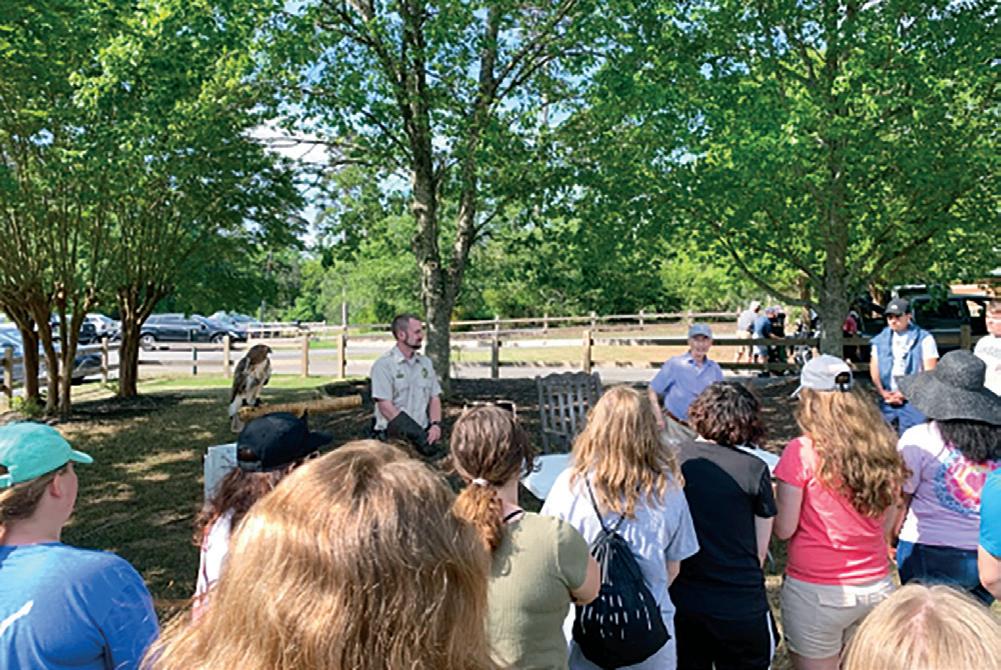








Throughout the morning the students and guests were guided through four learning labs with each emphasizing how STEM is used not only in the classroom but on the golf course. The learning labs consisted of a wildlife station, a Cool Tools on the Green station, a Soils station, and a Math on the Course station.
The wildlife station was hosted by Matt Vawter, Park Ranger at Harrison Bay State Park and David Stone, retired golf course superintendent at The Honors Course. Vawter spoke to the students about how golf courses can provide a safe and suitable habitat for wildlife to live, in addition to protecting the environment. The students were especially excited to see Scarlett, a trained red-tailed hawk, which Vawter brought to show. Stone shared several different resource books on birding along with new phone apps the students could use to help identify birds.
Brad Marcy, Golf Course Superintendent at Indian Hills Golf Course, Murfreesboro and Bill Czekia, University of Tennessee turfgrass research plot manager, shared with the students how technology and engineering are used in golf course management at the Cool Tools on the Green station. At this learning lab students learned about the different types of grasses grown on a golf course along with how a putting green is constructed. Different styles of golf course maintenance equipment were displayed, and the students participated in hands-on practice of measuring greens speed, moisture content in the greens, and cutting a cup in the putting green.
Ron Wright, Southeast Field Rep for GCSAA, spent the morning speaking with the students about the different types of soil types found on the golf course. The students learned the difference between silt, sand, and clay and how these soils impact the air and water movement for turfgrass. Students learned about how soil filters pollutants to clean water and provides food and structural support for turfgrass, plants, and trees.
The Math on the Course Station was hosted by Tyler Guy, Golf Course Superintendent at Signal Mountain Golf and Country Club and Ryan Swilling, Regal Chemical Company sales representative. Students took part in measuring and calculating the area of the rectangular shaped chipping green and the irregular shaped practice bunker. Students also calculated volume measurements to determine the amount of sand required to fill the practice bunker to a specific depth and used that value to calculate the cost of sand to fill the bunker with fresh sand.
In addition to the learning labs, two activity stations were set up so that participants could hit golf balls on the driving range or putt on the putting green. The students received instruction from Lamar Mills, Chattanooga area director for the Tennessee Golf Foundation and Robin Boyer, head golf professional at The Bear Trace at Harrison Bay.
Special thanks to all the volunteers who donated their time and shared their knowledge with the students to make this event a success. Without them this event would not have been possible. Thank you to Mr. Friedlander and the students from Hixson High School for their participation and enthusiasm and thank you to Paul Carter and the Bear Trace staff for hosting the event.
The First Green program was a perfect opportunity for me to reinstate out-of-the-classroom learning for my students in a way that connected important STEM and soft skills with career skills and a lifetime sport. My students loved learning about all the science behind golf course management and getting a taste of the game of golf. It was a great experience that I hope to offer again to my students in the future. – Lee Friedlander
For information about The First Green or about hosting an event at your course, visit https://www.thefirstgreen.org/ or contact TGCSA at info@tgcsa.net.


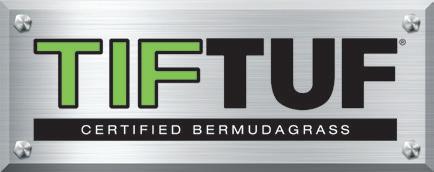

By Jeffrey Derr, Ph.D.


Preemergence and postemergence herbicides can be effective options for managing troublesome weed species in lawns, landscape beds, and other areas. However, sometimes herbicides do not perform as expected. Listed below are some reasons that herbicides can provide less than desired results. First I will discuss preemergence herbicides and then follow with a separate section on postemergence herbicides.
There are application issues, weed species impacts, as well as environmental ones that can adversely impact weed control with preemergence herbicides. Keep the following in mind when developing a program utilizing preemergence herbicides.


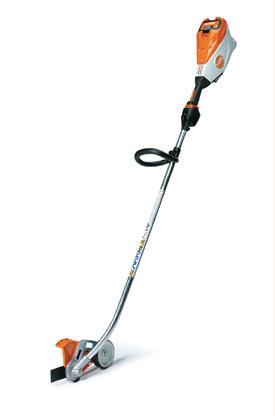





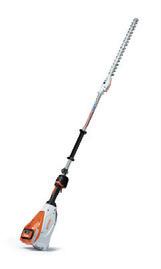


1. Lack of activation. All preemergence herbicides need to be activated by rain, irrigation, or mechanically to move the herbicide into the zone of weed germination in the soil. Annual weeds will predominantly be germinating in the top inch or two of soil. The activation rainfall or irrigation event should occur soon after herbicide application, ideally within a few days. If a preemergence herbicide sits on the soil surface for several weeks with no rain or irrigation, it can break down from sunlight (photodecomposition) or volatilize (leave the soil surface as a vapor). This reduces the level of herbicide in the soil such that the rate may be now too low to effectively control weeds when rains finally occur. This is especially important for herbicides with low water solubility or herbicides that are more volatile, such as trifluralin (Treflan, Preen Garden Weed Preventer, etc.). One ideally would like to irrigate immediately after application for chemicals such as trifluralin or napropamide (Devrinol) or mechanically incorporate it right after application. We would like have to a quarter to a half inch of rain for activation.
2. Excessive rainfall. While we need a rain for activation, excessive rainfall will result in deeper leaching of the herbicide, reducing the level in the top inch of soil where weed seed will predominately germinate. Higher rainfall levels will also increase microbial activity in the soil, increasing herbicide break down. Microbial degradation is an important means of herbicide break down in the soil and microbial growth increases under moist soil and warm temperatures. If we get 10 inches of rain for example in April, that crabgrass preventer you put down in March will not last long, resulting in crabgrass germinating during mid- to late-summer.
3. Wrong herbicide. Each preemergence herbicide will have a certain spectrum of annual weed species that it will control, while other weed species will not be controlled. One good example would be isoxaben (Gallery), an herbicide used for preemergence control of broadleaf weeds such as common chickweed, henbit, and prostrate knotweed. However, Gallery will not provide acceptable control of crabgrass. If one wants to use Gallery, a crabgrass preventer should be added for control of weeds like crabgrass or annual bluegrass.
4. Wrong life cycle. As a general rule, with some exceptions, preemergence herbicides control annual weeds but not established perennial weeds. One good example of this would be comparing controls for crabgrass versus that for dallisgrass. Annual grassy weeds will be controlled by a crabgrass preventer but established perennials like dallisgrass or bermudagrass will not be affected. So if a client says that your crabgrass application failed, make sure the problem isn’t dallisgrass, which will go dormant (brown) in the winter but regrow in spring. If you see a large grassy weed in March or April, it cannot be a summer annual grass like crabgrass. It will take a while for an annual grass, that must germinate from seed, to reach significant size.
5. Wrong timing. Preemergence herbicides generally do not control annual weeds once they have emerged. That is why we need to learn when annual weeds start to germinate so we can time an application a week or two before then. If annual weeds are already emerged at time of application, one often needs to apply a
postemergence herbicide or hand weed those existing plants. If one waits until May to apply prodiamine (Barricade, others), for example, established crabgrass will not be controlled. Along the same lines, a crabgrass preventer applied in March will not control annual bluegrass germinating in September. One would need to apply the crabgrass preventer in August for annual bluegrass control since this weed will start to germinate in early September.
6. Long germination period. Preemergence herbicides often last around 3 months in soil. If a weed species germinates over a period longer than 3 months, then late season breakthrough can occur. For example, crabgrass in southeastern Virginia can germinate from March through August. This is a period of over five months. So we may see crabgrass emerging in July after the March preemergence application has broken down. One way to address is through the use of split applications, applying part of the use rate in March and applying the rest in May.
7. Application errors. I sometimes am asked how much of a preemergence herbicide to mix per gallon. Preemergence herbicide rates are based on the amount of area being treated, not on a rate per gallon. The amount of herbicide to add to the spray tank is based on the spray volume. The spray volume applied per unit area depends on nozzle size, pressure, and speed. So if one guesses at how much to mix per gallon, they may be putting out too low or too high a rate, depending on the actual spray volume. Calibrate your sprayer or granular spreader to apply the correct amount of herbicide.
8. Herbicide resistance. Repeated application of the same herbicide or herbicides with the same mode of action can lead to resistance. Resistance refers to a weed species that used to be controlled very effectively but is no longer controlled due to the occurrence of a resistant biotype. One example in Virginia would be the report of oxadiazon (Ronstar) resistant goosegrass. Another example is triazine-resistant annual bluegrass, where biotypes have developed resistance to simazine and atrazine. We saved seed from a triazine-resistant annual bluegrass project from a few years ago and found that biotype is also resistant to amicarbazone (Xonerate). Learn the mode of action for herbicides you use and rotate modes of action where possible.
9. Rate too low. We use higher rates on clay soils higher in organic matter and lower rates in sandy soils low in organic matter. A low application rate to a soil high in organic matter can result in considerable adsorption, reducing the amount available for weed control. In fact, many preemergence herbicides do not provide effective weed control in muck soils, which are high in organic matter (20% or more organic matter level).
10. Applying an herbicide above mulch rather than applying it before mulching. Some of the herbicide can by tied up on bark particles if applied after mulching. Also, one is dependent on rain to move the herbicide through the mulch layer down to the soil, where weed seed is germinating. Applying the herbicide before mulching places the herbicide closer to the site of weed germination. The mulch will protect the herbicide from photodegradation if spread after herbicide application.










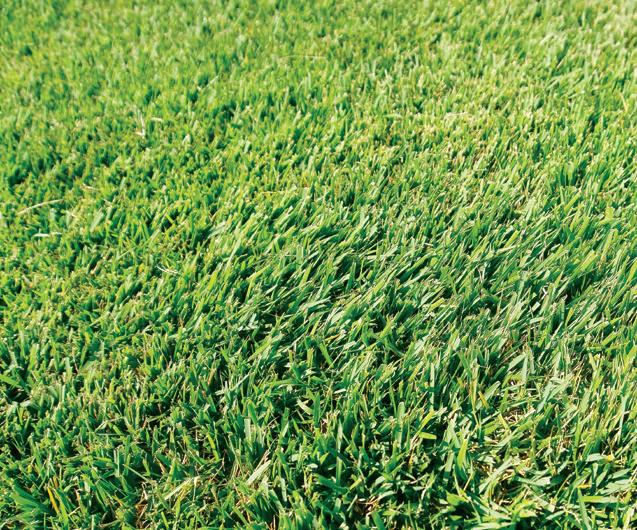



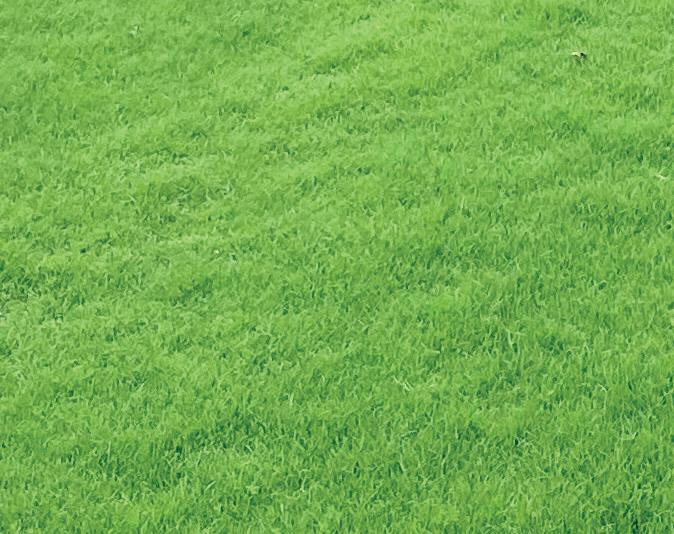

Postemergence herbicide are also affected by application issues, species impacts, and environmental conditions.
1. Applications under drought conditions. Weeds do not readily absorb and translocate herbicides when they are under drought stress. Either irrigate several days before an intended application or wait until a few days after a rainfall to ensure that the targeted weed species is actively growing under good soil moisture.
2. Rain soon after application. If a shower kicks up 15 minutes after a glyphosate application, for example, much of the herbicide could run off the weed foliage, resulting in poor weed control. Hold off spraying if there is a good chance of rain that day.
3. Applications under cold conditions. Applications when temperatures are cold, especially below 50°F can result in erratic weed control. Again, weeds do not absorb and translocate herbicide when under stress, including cold temperature stress. Ideal spraying conditions would be temperatures above 60 F with good soil moisture. We have applied certain postemergence herbicides at air temperatures in the 40’s, with acceptable weed control but control takes longer and control can be erratic.
4. Wrong herbicide. For example, applying a postemergence grass herbicide like fluazifop (Ornamec, Fusilade II) will not control sedges. So use the term nutsedge when dealing with this sedge species. Using the term nutgrass is confusing and could result in someone picking the wrong product to spray. In general, grass herbicides do not control sedges, and sedge herbicides often do not control grasses. Identify the target weed species and then choose the appropriate product.
5. Forgetting to add a surfactant. Certain products require an adjuvant for effect weed control. Reward/Diquat is a contact herbicide and a nonionic surfactant must be added to spread the spray droplets evenly across the leaf surface of weeds. Check the herbicide label to see if a surfactant, crop oil, or MSO (methylated seed oil) needs to be added. When spraying overtop ornamentals, especially during summer, we recommend use of a nonionic surfactant as oils can heat up an herbicide, possibly resulting in some contact burn.
6. Antagonism. Sometimes when certain pesticides are mixed together, antagonism can result, reducing weed control through effects on absorption and translocation. For example, we have seen reduced grass control when fenoxaprop (Acclaim Extra) is mixed with postemergence broadleaf herbicides containing 2,4-D like Trimec Classic (2,4-D + MCPP + dicamba). In this case, these two products should be applied separately, first applying Acclaim Extra and then applying the Trimec Classic a week later. Read the label when considering mixing two or more herbicides together. A small jar test can be done to test for spray tank incompatibility.

7. Incorrect spray volume. A systemic herbicide like glyphosate (Roundup, others) is best applied in low spray volumes, such as 10 to 20 gallons per acre. Thorough coverage of the leaf surface is not required for a systemic herbicide like glyphosate and uptake seems to improve with more concentrated spray droplets. For a contact herbicide like diquat, however, higher spray volumes are necessary, especially for taller vegetation, where a 100 gallons per acre spray volume may be required for thorough coverage of taller weeds.
8. Water quality issues. Muddy water with suspended clay particles can tie up herbicides like diquat, rendering the chemical ineffective. A high calcium content is a concern when applying glyphosate as it can lead to insoluble salts that are not readily absorbed. Addition of ammonium sulfate can help as it will tie up the calcium. A very high pH or a very low pH in the spray can adversely affect herbicide stability.
9. Herbicide resistance. As with preemergence herbicides, weed species can also develop resistance to postemergence herbicides. We have documented annual bluegrass biotypes resistant to the sulfonylurea class of herbicides, which includes Monument, Katana, Certainty, Revolver, and Tranxit. Another example in Virginia is the occurrence of horseweed resistant to glyphosate. To help prevent the development of herbicide resistance, rotate herbicides with different modes of action, combine herbicides with different modes of action, utilize both preemergence and postemergence herbicides, and use nonchemical measures where practical.
10. Wrong timing. Dimension (dithiopyr) will control one or two leaf crabgrass but will not provide acceptable control of well-tillered crabgrass. Drive (quinclorac) is more effective on young crabgrass plants in spring compared to multi-tillered plants in summer.
11. Wrong rate. We learned this with our evaluation of pinoxaden (Manuscript), where the spot treatment rates were much more effective than the broadcast rates. Read the label to determine the optimum rate for the target weed.
Identify the major weed species at each site you maintain and develop a plan to address those problems. Scout in the spring to identify winter weeds when they are in flower and thus easier to identify and scout in late summer to identify summer weeds when they are in bloom. These two time periods may not be the optimum time for control but will guide future management plans. Consider soil and weather conditions when scheduling herbicide treatments. If herbicide resistance is expected, let us know as we like to confirm resistance.



VGR Topchanger
Inject sand , aerate and topdress in a single pass WITHOUT pulling cores .
GKB Sandfiller
Verticut , collect , and Backfill with sand in a single pass !
GKB Deep Tine Aerator
Robust , powerful , dependable and flexible with a variety of tine lengths .






By Max Schlossberg, PhD.
The
important cultural practice of irrigation comprises three components. They are, in chronological order; monitoring, control, and delivery. They may ring familiar too, as they were just articulated by Dr. Grady Miller in the Sept. 2021 issue of SportsField Management (p. 50). Imitation is the sincerest form of flattery, right? Then I added some otherwise original content and withheld discussion of the ‘control’ component for last.
Current monitoring tools and techniques have undergone significant advancement in recent period. While they share the common goal of providing timely soil water status to managing personnel, they fall into one of two categories.
Using climate data to estimate soil water Environmental monitoring affords professional turfgrass managers incredibly valuable information. Predictive models use real-time climate data to guide scheduling of cultural practices supporting accuracy and adopter appreciation. New irrigation systems and/or controllers often include environmental monitoring instruments that automatically compile the data for input into prediction models, run them, and adjust irrigation controller runtimes accordingly. These are commonly referred to as evapotranspiration (ET) controllers and may be available as retrofits for older systems. If this technology is interesting news to you, then please start a conversation with your neighborhood irrigation vendor or technical rep.
Otherwise, many regions of the US are covered by statewide or local ET monitoring networks. These may not relay real-time environmental conditions specific to your location, e.g., precipitation, humidity, etc., but likely will provide useful hourly or daily summaries of potential ET across your region. Nonetheless it is important to realize ET models estimate only extraction of water from the rootzone, not an explicit or certain irrigation requirement.
Irrigation need arises when soil water storage, required to support turf health between now and the next irrigation opportunity, falls below a critical level. Accurate soil water storage estimates rely heavily on site-specific edaphic properties: the effective turfgrass root depth, the mean plant-available water holding capacity throughout the effective root depth, and the estimated soil water storage at monitoring initiation. Predictive models not updated by site-specific determinations often employ default settings of varying suitability. Update these settings with representative soil laboratory test results to optimize turfgrass performance and irrigation efficiency.
Using sensors/meters to measure soil water Direct, real-time measurement of soil water comprises a significant added value to environmental monitoring. Soil moisture data is collected automatically by installed/static sensors or manually using portable meters. Below-ground sensors may be monitored remotely by smart phone, networked to your irrigation system controller, or both. Having discussed such technology with Mr. Derek Pruyne, lead agronomist for UgMO Technologies and two-time PSU Turfgrass advisee/alum, I learned wireless underground monitoring technology currently directs the automated irrigation of over a thousand facilities in North America alone.
Portable soil moisture sensors/meters employ 1- to 6-inch-long time domain reflectometry (TDR) rods, or capacitance probes, to measure soil water content rapidly and accurately with minimal disturbance. I emphasize soil moisture sensors/meters to prevent readers from mistaking handheld, pocket-sized moisture meters (for measuring firewood or drywall wetness) as appropriate for turfgrass applications. They are not. Portable soil moisture meters are two to 3-feet long and quite pricey, but rapidly support general diagnostic inquiries all across your facility.
Where irrigation water costs are high, portable soil moisture meters promptly pay for themselves. Yet overwatering is so agronomically counterproductive to turfgrass that I’d argue these portable soil moisture meters pay for themselves where water is free. Many late-model meters are GPS-compatible and compliment GIS platforms with meaningful map layers. But dependable collection of quality data requires compliance with manufacturers’ recommendations during both setup and subsequent usage. The performance of portable soil moisture meters is governed by proper rod/probe length selection and optimized by initial and subsequent calibration(s). Furthermore, the steel rods/probes of moisture meters will wear down with repeated use and sample shallower depth(s) over time. Operators should interpret the resulting data accordingly and replace rods/probes as needed.
If you already use these monitoring tools and technologies at your facility, kudos! The overwhelming response I hear from managers and superintendents who have adopted irrigation monitoring instruments and/or soil moisture meters is this: Without them, they would have never realized how much they previously overwatered!
Optimized replenishment of soil water storage beneath our coveted turfgrass is the final, yet undoubtedly most critical, stage of the process. Imagine a facility with brand-new pumps, a fertigation
tank, an ultra-modern central controller, a wireless network of multiple environmental monitoring instruments, buried soil moisture meters, and single rows of heads with missing/worn nozzles on terminal laterals branching out in every direction. It’s as sad as a shiny Carver Amp playing the White Album through speakers detached from a 1994 Panasonic stack. So don’t mistake my tone as unenthusiastic about irrigation, modern irrigation systems are amazing technological advances that support efficient water use and conservation. But if a new install isn’t in the cards, optimizing water delivery can pay dividends.
The number of valuable recommendations for optimized delivery of irrigation is too great to reproduce in full. If you seek comprehensive refreshing, please consult irrigation BMPs available through numerous trade associations or University Extension/ Outreach websites. But a few worthwhile suggestions include irrigating: during still conditions, in pulses (when delivering a sizable soil water recharge), and uniformly over the target area.
Rate and uniformity of water delivery by an irrigation system are determined by an irrigation audit. Numerous descriptive University Extension/Outreach publications are available in support of this procedure. A guide by the North Carolina State Univ. Extension Service succinctly describes the required materials, detailed steps, and summary calculations. A well-executed irrigation audit reveals necessary repairs and/or adjustments as well as information needed to adjust runtimes and/or nozzles on a zone-byzone basis. Data collected by Texas A&M’s AgriLife Extension show water savings from irrigation audits average between 12 and 30%, equating to 700 million gallons annually in Texas alone.
While a proper audit will likely prove worthwhile, a beneficial outcome will depend on committed effort and patience. I recommend the ‘Family-Pack’ of dedicated collection cans that feature wire stands and etched graduations, because you simply can’t have too many. The gradations facilitate trouble-free data collection and accurate irrigation rate determination. Some website instructions offer cost-cutting alternatives; like a sleeve of stackable ‘Solo-type’ cups for collection by a one-time audit. They further suggest users expedite the data collection process by measuring depth of irrigation captured in each with a ruler and recording the irrigation ‘depth’ as head units. This will suffice for auditors seeking to determine only distribution uniformity. Because stackable cups taper wide to narrow from top to bottom, this approach will inflate irrigation rate measurements per unit run time.
In all candidness, it takes extraordinary confidence in his/her team’s assessment of current conditions for a manager to withhold irrigation another night in July. It may additionally require a ≥40% chance of afternoon thunderstorms tomorrow… or perhaps a ≥60% chance of afternoon thunderstorms tomorrow. Regardless, deciding current soil water storage will adequately support turfgrass health until the next irrigation opportunity arises is how turfgrass managers conserve water.
For any given year, if we knew the number of times professional managers applied irrigation within 24 hours of a sizeable rainfall event; i.e., unnecessarily, then we could compare it to the number of times significant turfgrass areas perished due to reckless
withholding of irrigation. Am I implying one number consistently exceeds the other? No. The data hasn’t been collected…and I never imply. Rather, the message turfgrass science sends us is that good information, a talented supporting staff, and a confident mindset can make both numbers zero.
Overwatering is irresponsible, injurious, and arguably the foremost scourge on our industry. I mean c’mon, 14-yearold TikTok influencers get 8000 likes for dogging neighbors irrigating in the rain. In addition to broader societal benefits associated with not wasting valuable resources, irrigating unnecessarily can stress and injure turfgrass. This is especially true of intensively-managed cool season turfgrass during extended periods of high temperature.
The over-arching paradox is clear: A clientele that made beaucoup investment in supporting infrastructure won’t forever tolerate a superintendent appearing to underutilize it. As a result, risk aversion makes unnecessary irrigation a more common outcome than drought stress injury. But a reasonable counterpoint is my favorite Dr. Clint Waltz Jr. adage: Just because you currently have formula and a bottle warmer, doesn’t mean it’s time to feed the sleeping baby!
If you are already employing modern instruments to actively monitor ET and/ or soil water storage, and the irrigation delivery in every zone of your facility has been audited in duplicate and features a near 100 distribution uniformity, and you follow all the recommended

BMPs, but you still rarely encounter drought stress and wonder if you aren’t somehow overwatering, then I recommend one last procedure to support your water conservation goals.
Take ‘The One-Off Challenge’ to calibrate your water use know how
For the proud DIY professionals, an inexpensive yet meaningful and intuitive way to judge your soil water assessment skill is to just turn off one of your sprinkler heads. I’m serious. Spring is a really good time to take ‘The One-Off Challenge!’ Pick a head that services a fairly typical soil profile at your facility, and manually key it to off. Avoid predominately annual or rough bluegrass stands, opting instead for a system populated by species capable of recovering from shortterm drought stress. An ideal spot is at the beginning of a frequently visited fairway and/or near your maintenance facility.
Now you may be wondering why anyone would do this. It certainly isn’t predictive or proactive like estimating or measuring soil water. It won’t afford any utility until irrigation is applied. But for turfgrass professionals who strive for improvement, it may prove a valuable retrospective selfevaluation tool that recalibrates your irrigation decisionmaking. For example, the longer the sprinkler head stays off without reduced vigor or density of the serviced turfgrass, the more productive the exercise will prove.
As a professional, you’ll be prepared to turn the head back on when required. This time will arrive under all but the rarest of summer weather conditions. For those managing facilities where dry seasons prevail, the One-Off Challenge may be terminated after the first week. But if it helps a manager identify a recent irrigation event was unnecessary, then it was an informative week. Return the sprinkler head to operation if the serviced area presents symptoms of drought stress, e.g., wilt, discoloration, matting/ footprinting; or the current climatic conditions compel initiation of a leaching requirement.
